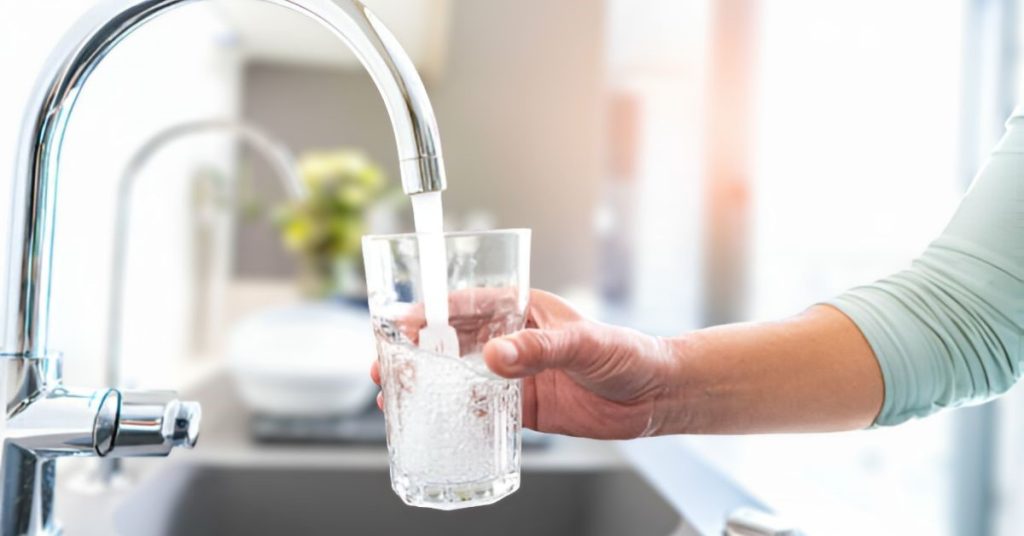You installed a water filter, hoping to solve the taste issue. At first, it did the job. The water tasted fresher, more drinkable. But lately, something’s changed. A flatness, maybe a metallic hint. Nothing else has shifted, yet the flavour is off again.
This is more common than people realise. Often, the issue isn’t the water source itself but how it interacts with your filtration system over time.
What’s Really in Your Tap Water?
A glass filled straight from the tap looks clear, cold, and perfectly fine; but one sip in, and you pause.
This is something many UK households deal with.
Water is treated, tested, and approved by strict regulations. But that doesn’t guarantee it tastes right. It just means something is off.
Some issues come from the water itself; like regional mineral content or natural compounds. Others develop once water moves through your home’s plumbing or past an old filter.
If you’ve ever brewed tea that just didn’t hit right or poured a glass of water that smelled faintly of bleach, you already know how noticeable those subtleties can be.
What Could Be Affecting the Taste of Your Tap Water?
Even clean water can carry hidden contributors to unpleasant flavour. As it travels from treatment plants through city pipes and into your tap, it may pick up traces of:
- Chlorine, used for sterilisation
- Calcium and magnesium, especially in hard water areas
- Iron or copper from old plumbing
These substances aren’t dangerous in small amounts, but even trace levels can produce noticeable changes in smell, flavour, or aftertaste, especially when they build up or combine. Chlorine can leave a pool-like odour. Metals may add a bitter or tangy note. And high TDS (total dissolved solids) can make water taste flat or stale.
In other words, safety doesn’t always mean pleasant. If your tea tastes off or your glassware shows spots, it may be time to order in some replacement filters and address what your current setup is no longer catching.
Some households notice seasonal shifts, too. Water from reservoirs can taste slightly different in winter versus summer due to temperature and treatment adjustments. And if you’ve recently moved, the change in regional supply can be more jarring than expected.
Why Filters Stop Working So Quietly
Water filters do their best work out of sight. Carbon blocks trap odours. Micron filters catch rust and particles. But these materials have a limit.
As your filter fills up, performance drops.
At first, the change is subtle. But eventually, the same off-flavours creep back in. In some cases, filters can even release what they’ve previously absorbed, sending it straight back into your drinking water.
Most systems don’t alert you. There’s no beep or flashing light. It’s just water that doesn’t taste right anymore. And in a warm, closed cabinet, an old filter can even become a breeding ground for bacteria.
Practical Insight: Leaving a filter in too long not only lowers quality but can make things worse than using no filter at all. That’s why knowing when to replace your filter and choosing the right one is essential for restoring both taste and safety.
What an Up-to-Date Replacement Filter Fixes Instantly
A fresh filter doesn’t just freshen the flavour, it restores proper system function. Here’s what a timely replacement can fix right away:
- Removes chlorine and chemical smells: Carbon soaks up compounds that distort flavour
- Filters out grit and pipe debris: Sediment filters catch rust and sand before they reach your glass
- Improves texture and clarity: Clean filtration leads to smoother, clearer water
- Protects your appliances: Fresh filters help kettles, coffee machines, and dispensers perform better for longer
You don’t need to replace your system. Just updating the filter can make your water taste noticeably better – sometimes within hours.
Practical Insight: Many users don’t realise how quickly filter performance can shift. One week your water is crisp, the next it’s cloudy or dull. A quick swap often restores not just flavour but peace of mind.
Real-World Filter Picks That Actually Work
Not every filter works for every setup. These four reliable options match common home needs:
● FF-7 Samsung / LG Compatible:
Built with coconut carbon, this triple-action filter reduces chlorine, odours, and limescale. It fits Samsung and LG fridge systems with screw-cap connections – ideal for cold water and ice.
● FL-ZAX2 (Hydro Boil-Compatible):
Made for Zip Hydro Boil units, this model tackles chlorine, sediment, and cloudiness. With a 5,678-litre lifespan, it restores clarity and improves boiled water taste.
● LG LT500P (Genuine):
Designed by Cuno 3M and certified to NSF standards, this filter removes over 96% of chlorine, improving water and ice from LG and Atag fridges. A strong pick for homes with built-in dispensers.
● 10″ Coconut Carbon or Sediment Block Filters:
These filters suit under-sink and countertop units. They trap rust, chlorine, and particulates without compromising water pressure; and they preserve natural minerals.
Are You Overdue? Signs It’s Time to Replace
- Water smells like chlorine or has a plasticky taste
- Tea and coffee seem dull or slightly bitter
- Tap or dispenser flow has slowed
- Limescale has reappeared in your kettle
- Ice cubes look cloudy or smell off
Another sign? You’ve simply lost track. Many people only replace filters once the taste changes. But by that point, performance may have been declining for months.
Conclusion: A Small Change That Tastes Like a Big Upgrade
Clean water should deliver a crisp, neutral taste; not one that’s flat, metallic, or off. It’s used throughout the day, from your morning coffee to food preparation. When water quality drops, it doesn’t just alter the taste; it impacts overall performance in brewing, cooking, and even appliance longevity.
Replacing your filters regularly keeps things on track. It extends appliance life, improves taste, and restores confidence in every glass.



